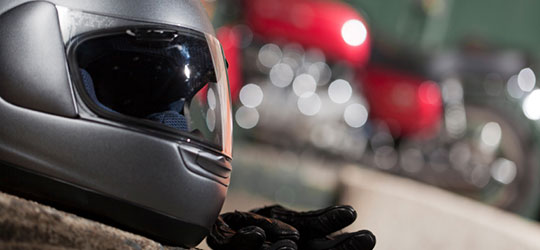Biker Safety Tips

Let’s face it, riding a motorcycle is risky. There are an infinite number of variables beyond your control that threaten even the best riders.
It’s not a matter of eliminating the risk of motorcycle riding. It’s a matter of safe motorcycle practices that will greatly reduce your risk profile. Let’s have a look at some of these safety tips.
Safety On the Road:
- Preserving “8 Outs” – Situational Awareness: If you think about the physical area surrounding you, you have a maximum of 8 general directions you can go to avoid something (3 directions forward, 3 backward (under heavy braking), and one to each side). In dense urban traffic, you may have none; it’s your job to continually scan the immediate traffic situation around you and preserve as many of the “outs” as possible.
- Use your horn in situations where you may not be seen – Don’t be afraid to announce your presence. A smart driver who may not otherwise have seen you will thank you for making them aware. If someone is offended, that’s ok – you confirmed they saw you; that’s is the ultimate point.
- Turn off your directionals after you turn. Countless motorcycle accidents happen because a driver sees a motorcycle with his directionals on, but continues to go straight – straight into the side of the car that thought the motorcycle was turning.
Safety On the Motorcycle:
You know this feeling – you jump on your motorcycle, cruise a few blocks, and can distinctly tell that something “isn’t right” with the bike. A quick 60-second inspection can catch safety issues before they become a safety hazard.
Quick pre-trip inspection:
- Check for any subtle tire sagging. Modern tire sidewalls are so stiff that a flat isn’t always obvious
- Brakes pads are at least the width of a popsicle stick
- Quick chain tension/lubrication check – don’t throw your chain off the sprockets
- Check all your lights (especially your running/brake light and directionals)
- Check the fuel. Running out of fuel in the #1 lane on a dark winter evening at the I-80/50 split can create some anxious moments. Check your fuel stopcock to make sure you’re not running on the reserve tank
Safety On Your Body:
Quality protective gear protects you where you’re most likely to suffer injuries, increases your visibility, and minimizes rider fatigue.
- A helmet will protect your head, but 78% of non-fatal injuries occur to the arms, legs and trunk – make sure you have quality protective gear from the neck down.
- High visibility riding gear greatly increases other drivers’ awareness of your presence. Have you noticed a recent trend of motorcycle riders wearing bright “safety” neon yellow jackets? Aside from enhancing your road presence visually, drivers recognize the neon yellow color as a general cue for road safety awareness. By being visually proactive about your own motorcycling safety, you help raise drivers’ awareness that motorcyclists are vulnerable, and to be on the lookout for them.
- Keep your hands warm and dry. Invest in an inexpensive set of ATV handlebar mitts for foul weather. Cold, wet hands translate into fatigue for the whole upper body, and will distract you from your primary responsibility: road awareness and lane position.
Read More for Safety
One of the best books available on motorcycle safety is “Proficient Motorcycling” by David L. Hough. It goes into much more interesting detail about the physics of motorcycling and the factors that go into minimizing your risk profile.
Should the unfortunate happen and you are involved in a motorcycle accident, remember – there are laws in place to protect you, and it’s imperative to seek the counsel of an experienced motorcycle accident attorney to guide you. Call the law offices of Frank D. Penney at (877) 550-4786 for a complimentary consultation today.
